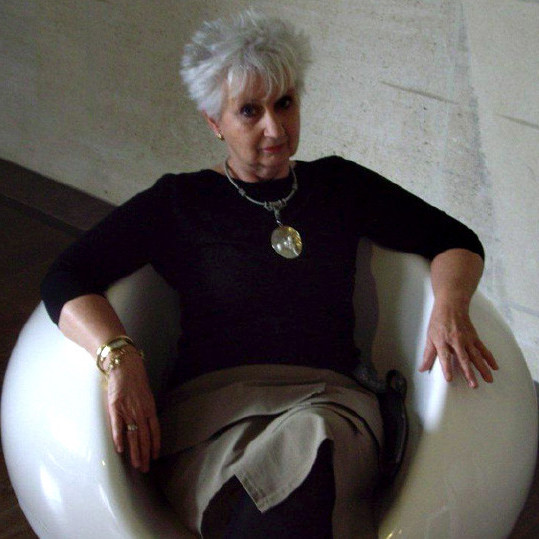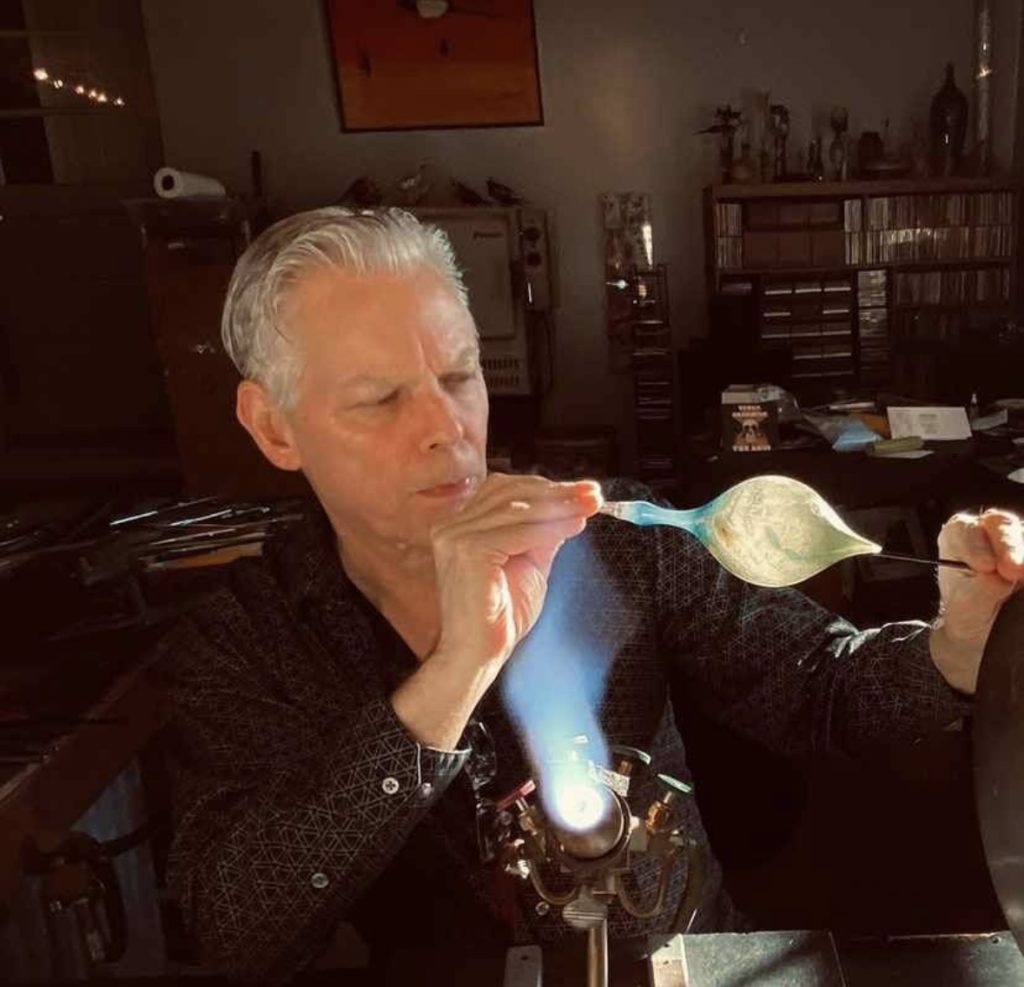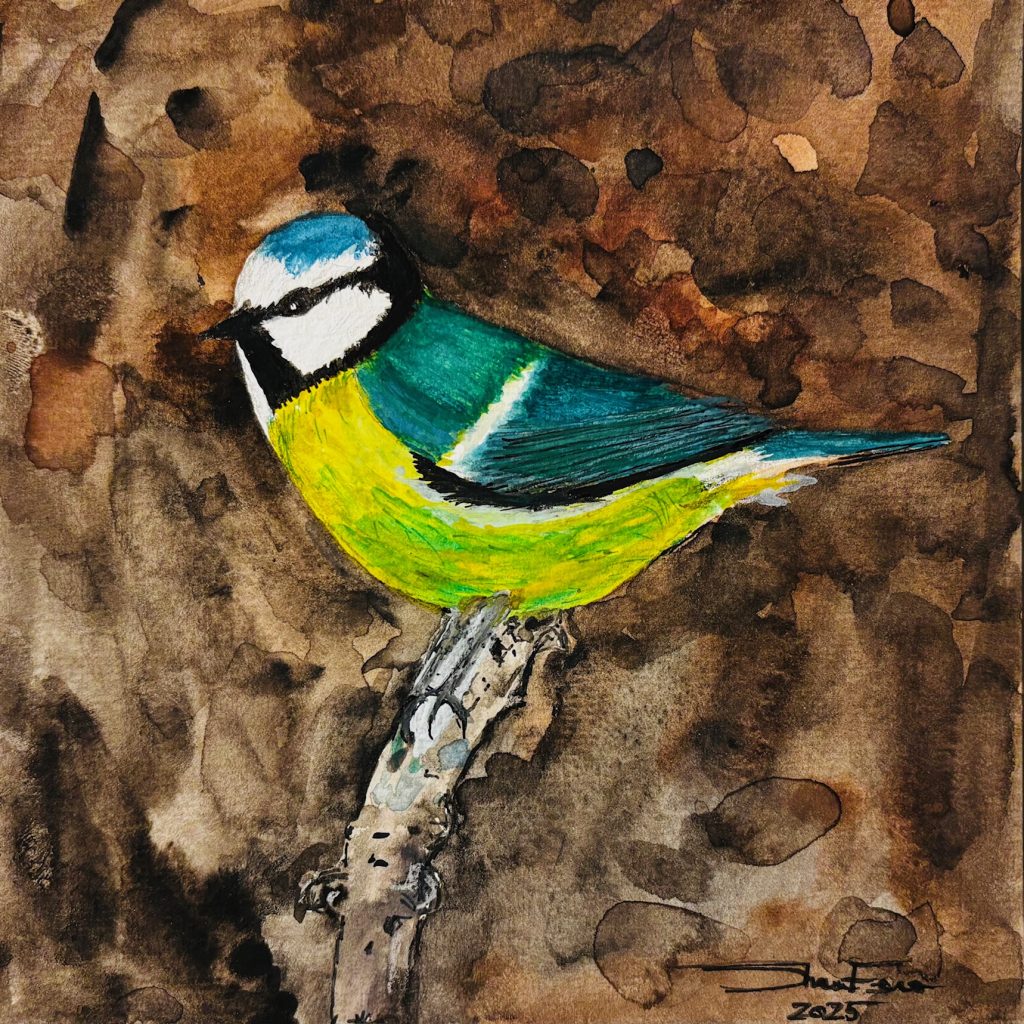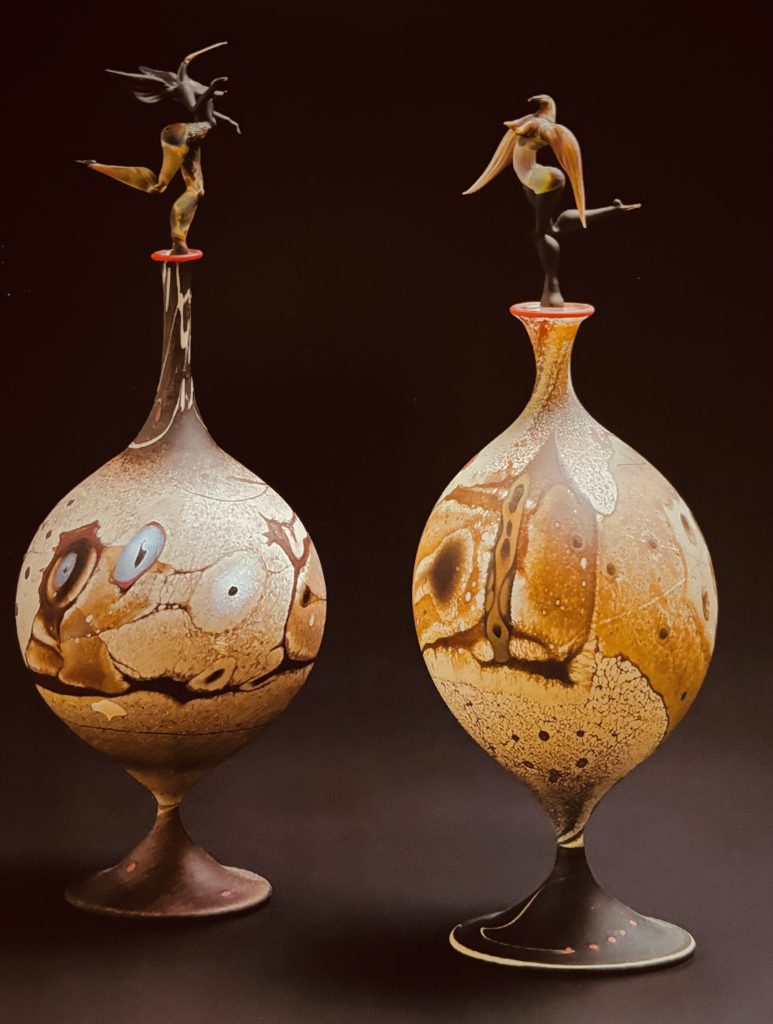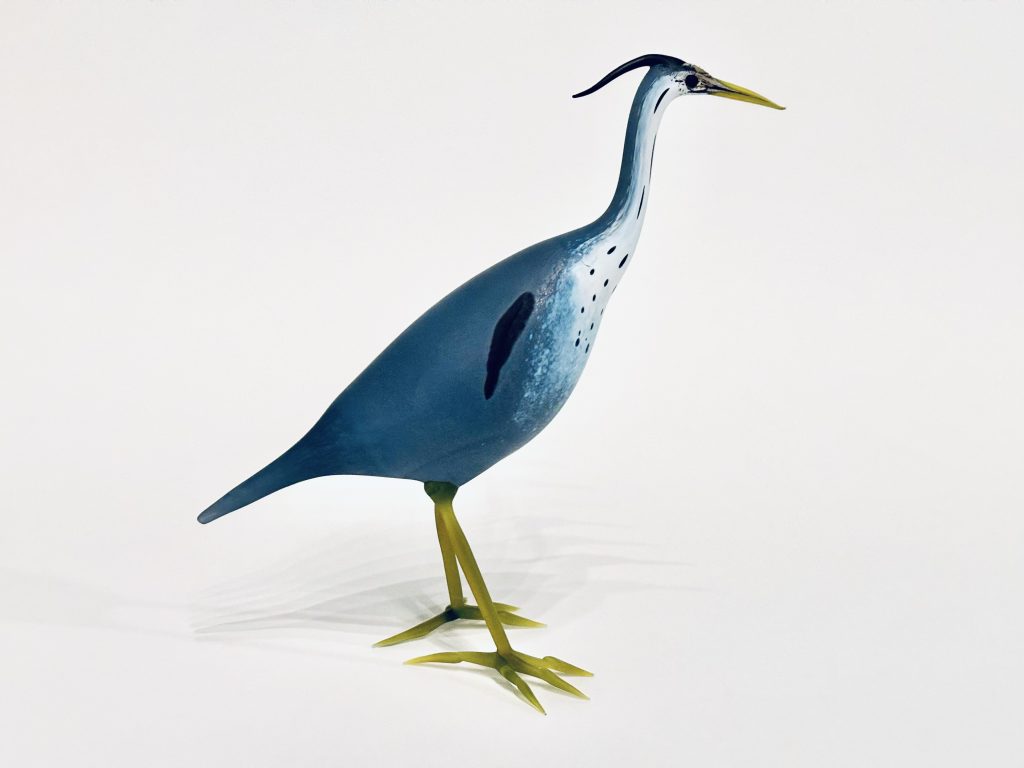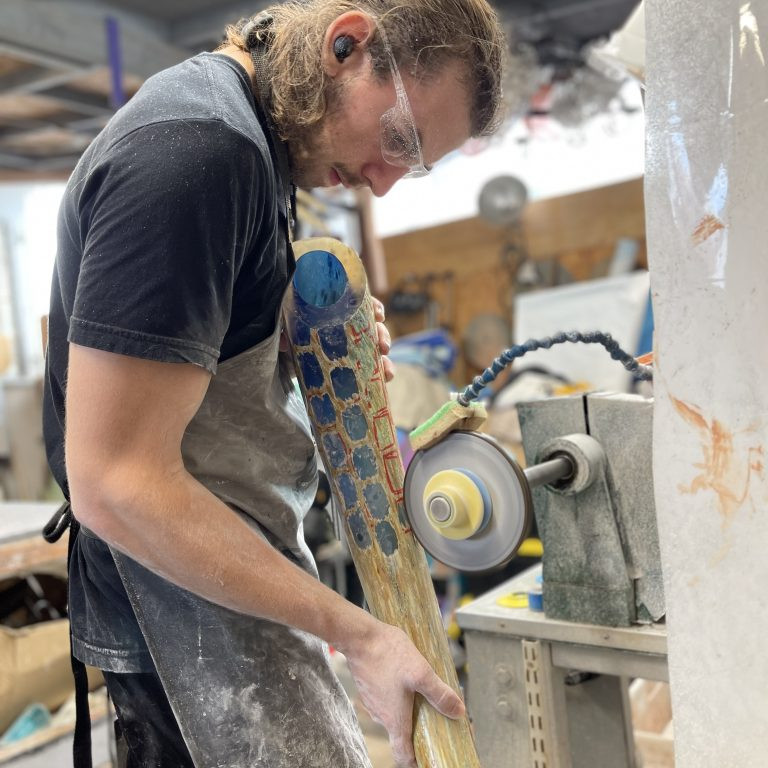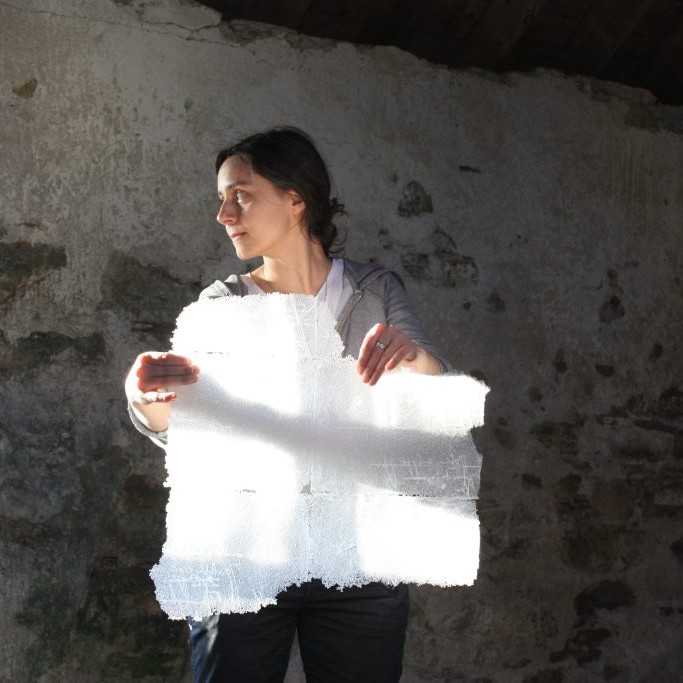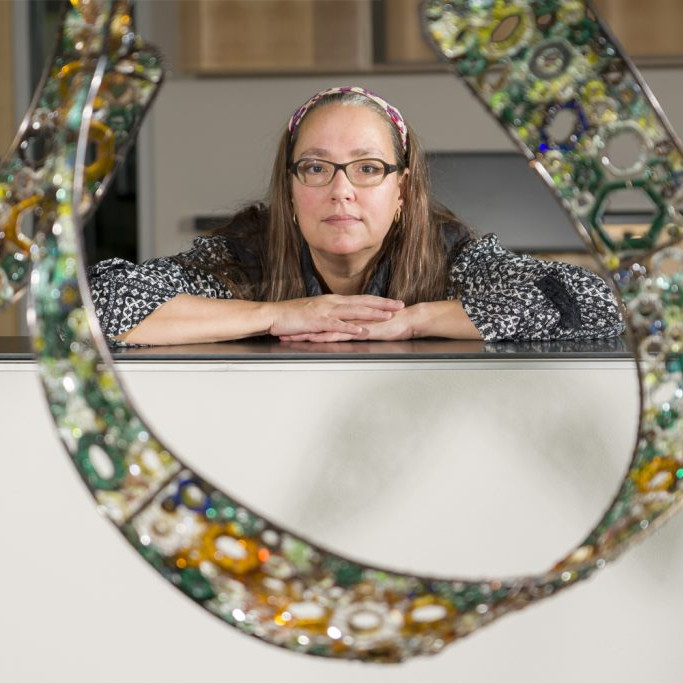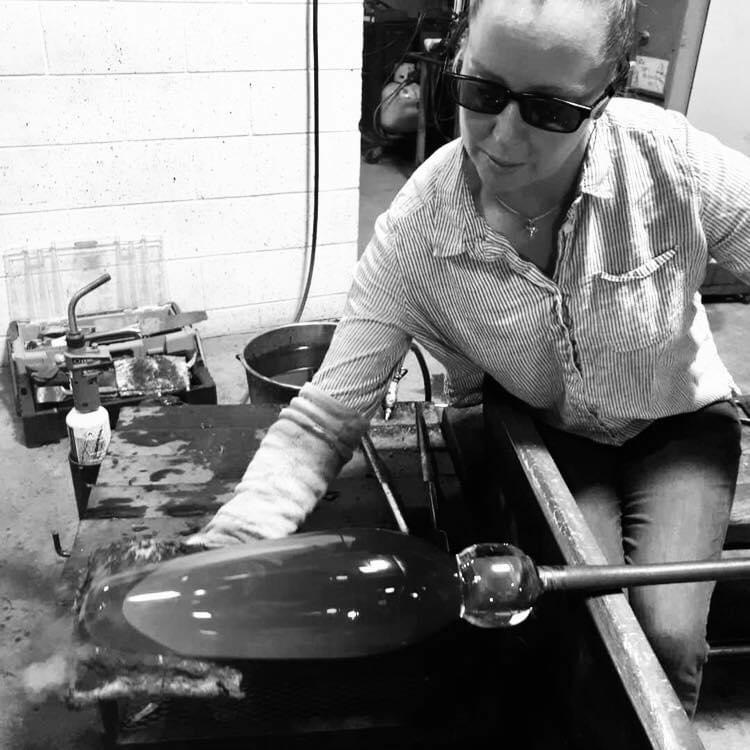Shane Fero Glass Artist
What led you to specialize in Flamework?
My family moved from Chicago to Winter Haven, FL when I was almost 14. We lived very close to a lake, and I would ride my bike around the area. There was a little area of shops called Pismo Beach on Lake Ned, which had a shop called the Howell Family Glassblowers. I would go watch Bob demonstrate and I was fascinated. About a year later in 1969, Bob and Marie retired and sold out to a younger couple of glassblowers, Jerry and Lee Coker. I would still visit and then they offered me a job doing odd jobs for them, and within two months they asked if I wanted to apprentice under them. This became a journey for me learning under them, although I was in high school. Later, one of their students, Roger Smith, bought them out as they wanted to move on. I continued under Roger becoming a demonstrator at Cypress Gardens and going to college as well. I continued this until I was 21 years old when I moved to the Adirondacks Mountains to demonstrate at two tourist attractions near the Canadian border to work under the Coker’s again. I was a philosophy major at Plattsburgh State University while making glass. In 1977, I opened my own gallery, Classical Glass in Plattsburgh with a colleague.
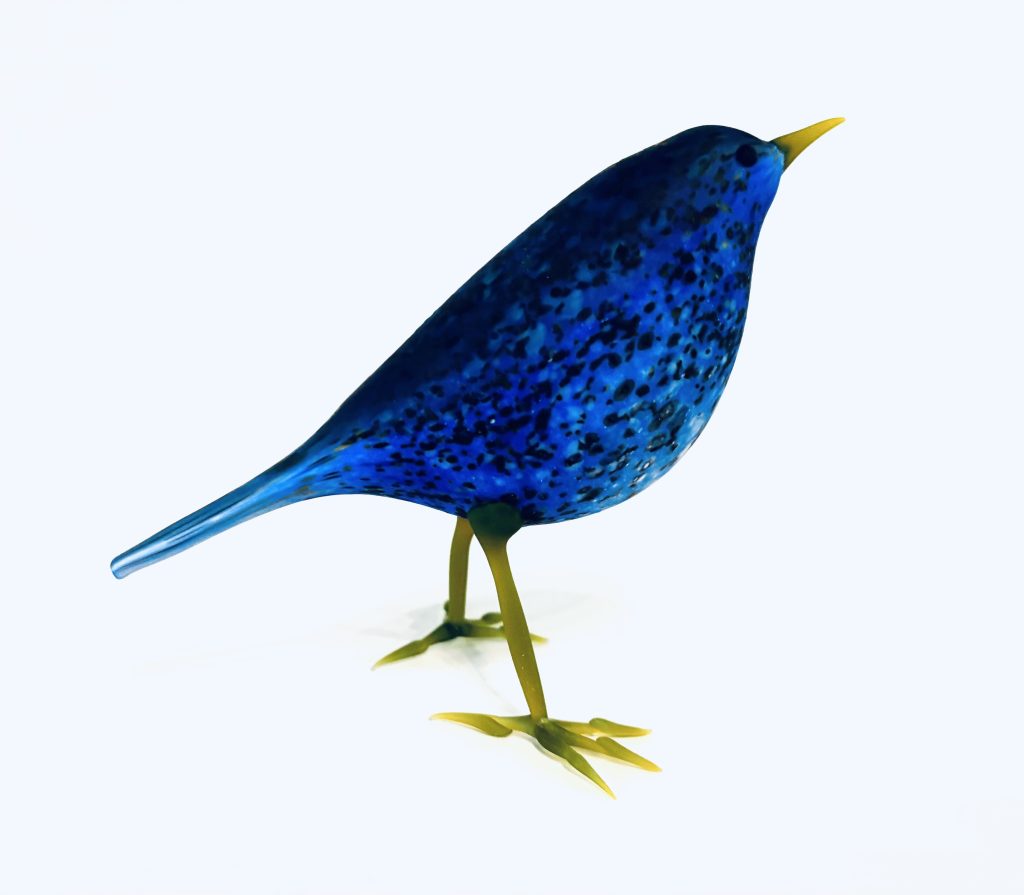 Dark Blue Bird
Dark Blue Bird
You have taught glasswork at all levels and in many countries. What three important things do you always want to pass on to your students?
Well, I have been teaching since 1977, and obviously teaching the fundamental techniques of flameworking is essential, but the use of colour and form is also very important. Above that, I try to impart the importance of a personal narrative and expression in their work over simple imitation.
When did you first create you glass birds?
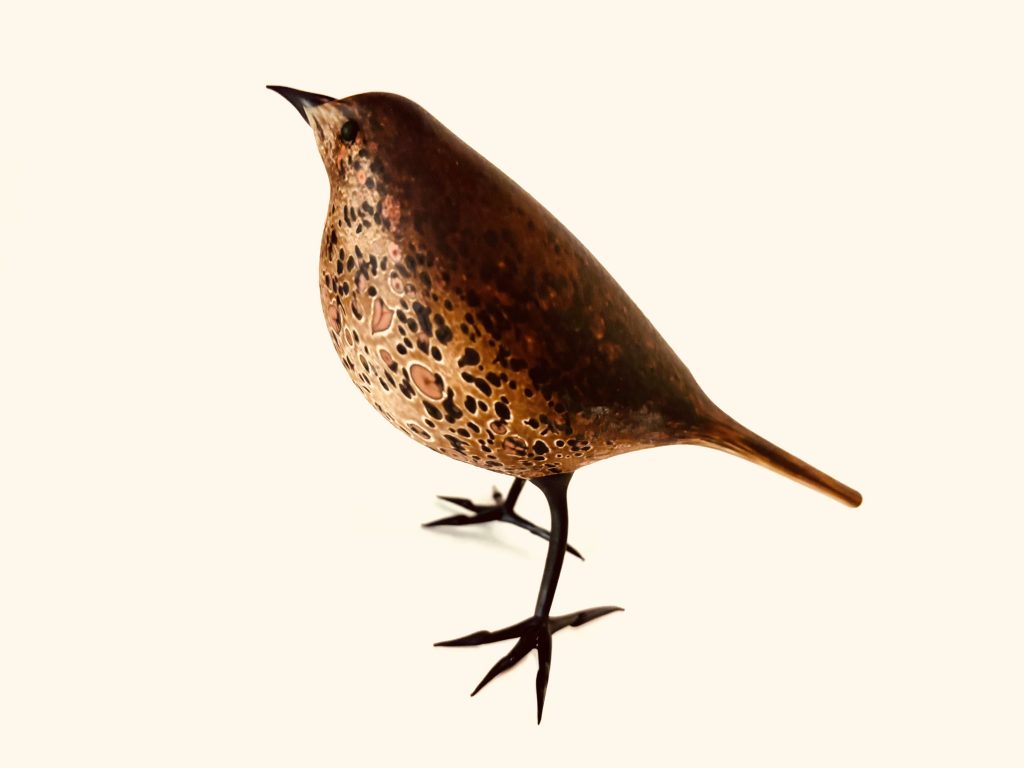
Boxwood Sparrow, 2025
One of the first things you learn after the basics in flameworking is how to make a simple solid bird. I also learned to make blown birds, but I would probably say that way back when, they were kind of kitschy. As to the modern blown birds, I started creating them in 2002 after 9/11. I was invited by my gallery, in Asheville, NC, Blue Spiral 1 to exhibit in a muti-media show on birds. I made a couple of shadow boxes with birds, some bird drawings, and some free-standing birds, which were a big success and continue to do so after all these years.
Blue Tit
How accurate are they to the actual birds?
Although, I do make actual species of birds, my focus is to make birds out of my imagination, although referencing colours, gesture and the spiritual aspect of birds. Basically, much of my work is painterly using forms to paint and draw with powder and rods of glass to achieve the quality I want. Then they are acid-etched to achieve the matt surface, mostly done by my wife, Sallie.
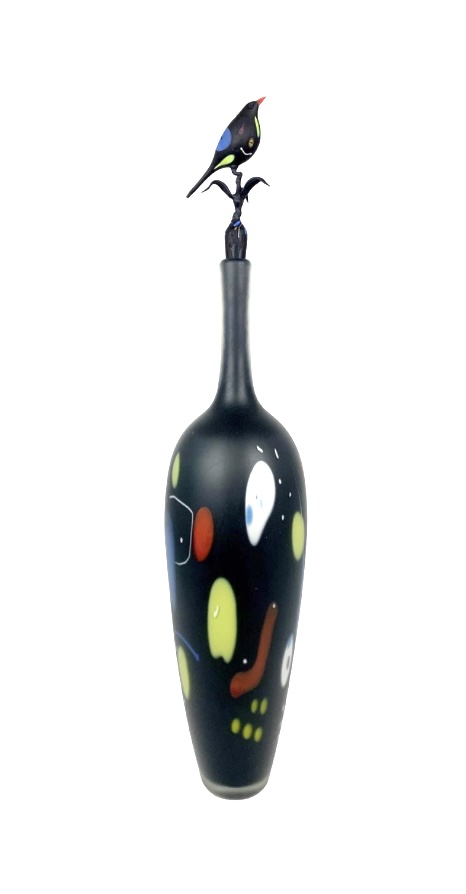
Birds have always played a connection to art through out history, discuss.
Yes, birds have always held a fascination with all cultures and this is depicted in art and even in literature. Birds with colours, the idea of flight, and even as pets is as old as civilization. I have been known to combine human and bird forms in my sculptures, based on my interest in mythology, archaeology, and in the history of art.
Two Bird Spirit Bottles
Comment on your involvement with Corning Museum of Glass in New York?
I first visited The Corning Museum of Glass when I was 19, right after the Great Flood that damaged the museum. After I moved to NY, I would visit the museum and also buy my glass tubing that I used from Corning Glassworks. Also, I had a gallery in Corning that would buy my work starting in 1978. I saw the first New Glass Review there in 1980. I was asked to do a lecture in 1980 at Plattsburgh State University on the modern Studio Glass Movement and although I didn’t have a lot of money, I bought the entire slide show for use in my presentation at Plattsburgh State. It was an important influence on me to focus on individual expression that I saw there. I was featured in the New Glass Review, but only once and lately in the acquisitions section.
In the early 2000s, Fred Birkhill (now deceased) and I co-taught for many, many years at The Studio of Corning Glass and then later, I taught there by myself. Back around 2016, the Museum acquired one my larger bird bottles (hot and flameworked glass) which is still on display. I was the President of the Glass Art Society from 2006-2010, in which I was a participant in planning the GAS conference there in 2009.
You have taken part in over 400 group and 33 solo shows. What are some of the stipulations you now have on your agreeing to show?
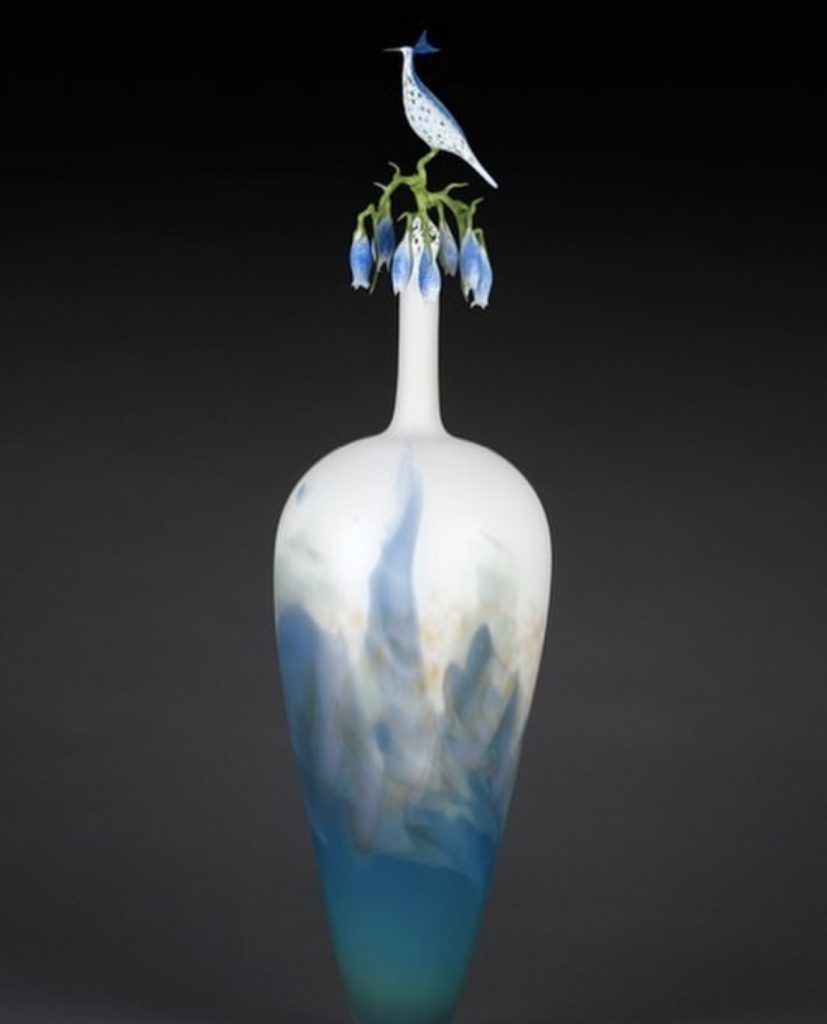
Mountain Landscape Vessell
Well, that number has increased! I don’t really have any stipulations in that
I agree to do exhibitions or not.
How do you package your birds to fly from your studio?
My birds are either nested in poly-fil or nested in carved-out soft foam and poly-fil for shipment.
You have other work that goes beyond birds.
Yes, even though I am known for my birds now, I also make solid surreal sculptures, shadow boxes, all kind of small vessels, animals of every kind, the large vessels, bottles and teapots (hot glass & flameworked), and I paint in watercolours and acrylics. Many of these can be viewed on my website.
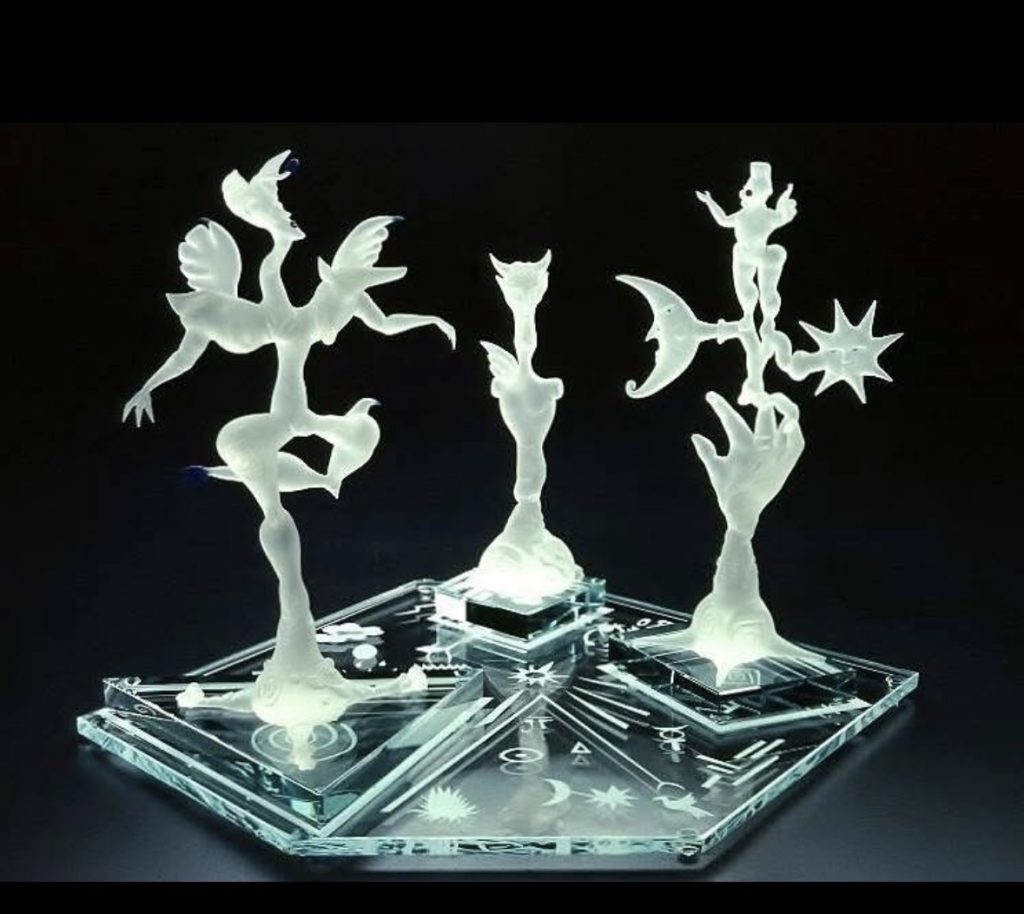
Spectrum
Do you see a difference between American glass and your knowledge of German glassblowing?
In the 19th and 20th Centuries, American flameworking was influenced by German Flameworking, especially from Lauscha. I have been there many times.
American flameworking diverged from the traditional flameworking, especially from the 1980s. It was more personal expression and narrative focused.
Although, Italian flameworking also has had a big influence as well.
How has the equipment you now use to what you learnt on 5 decades ago.
Yes, the equipment has changed considerably since I began in 1969. When flameworking really took off, it developed sub-genres like the bead movement and the functional pipe movement, more coloured glass in borosilicate, more tools, and torches evolved. The proliferation of glass and tools was significant. I still use crossfires that I was taught on with the addition of modern torches, though.
How large and small are your pieces?
My birds are around the size of small songbirds, around 4”h x 6-7”w x 3”d. but may vary. The big bottles or teapots are generally around 24”h x 7”w x 7”d., but have been up to around 30” in height. Some of the solid sculptures were up to 20”h. small vessels are around 12”h, and the shadow boxes 17” x 17”, but up to 40”l x 14”h
Great Blue Herron
Where has you glass art taken you?
My glass has taken me to four continents, including Australia twice, teaching, exhibiting, lecturing, and my work is collected by personal collectors and around 35 museums worldwide.
Expand on how different the colours have been to achieve?
Birds are made with a clear tube, covered with powders and rods that I draw with in the flame, and maybe glass shards or frits to achieve the desired results. They are then fused together, blown out and shaped. There is no difference in the process, except in the way I decorate them in layers of colour.
Contact
Shane Faro:
https://www.shanefero.com/https://jodygraham.art/
Deborah Blakeley, Melbourne, Australia
Interview by Deborah Blakeley, October 2025
Images on these pages have all rights reserved by Shane Faro

Think a colleague or friend could benefit from this interview?
Knowledge is one of the biggest assets in any business. So why not forward this on to your friends and colleagues so they too can start taking advantage of the insightful information the artist has given?
Other artists you may be interested in:

